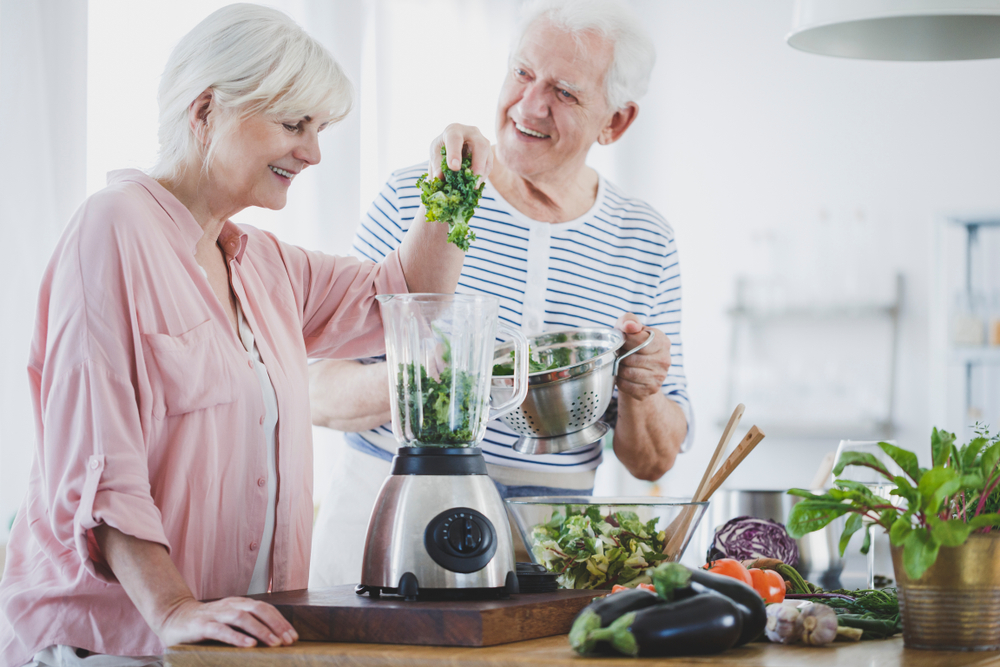Boosting Mood With Food
Comfort foods provide a quick boost, but the science is clear on what foods really nourish mental healthIf you’ve had a long day, or you’re too wiped to cook, do you ever reach for a fresh salad? Probably not. Like most people, you may head to the panty to grab a box of mac and cheese or perhaps the freezer for a tub of ice cream—no bowl. That stuff may help take the pressure off and make you feel all right, at least initially. High carb “comfort” foods send tryptophan to the brain, an amino acid that helps produce serotonin, a feel-good hormone. But those effects are short-lived. Those foods contribute to inflammation and can promote depressive effects in the long term. They also become addictive and increase the likelihood of weight gain, heart disease, and diabetes. On the other hand, diets high in fruits, vegetables, fish, and whole grains can lower the risk of depression by fighting inflammation. A meta-analysis published in 2018 in the British Journal of Nutrition found that for every 100 grams of fruit or vegetables consumed, the risk of depression fell by 5 percent. People don’t often think of salads, fruit, or oatmeal as mood-boosting. That’s likely because the impact isn’t immediate. Eating a salad won’t instantly start churning out feel-good hormones. These tastes also aren’t necessarily associated with “comfort.” You might remember eating ice cream with friends or your mom’s mac and cheese when you were a kid, but do you have those same feelings about apples and spinach? Improving mood with food takes a bit of a long-term outlook. Eating fresh foods and focusing on plant-based options regularly is the best way to fight inflammation that can contribute to depression. That doesn’t mean there’s no room for “comfort” foods. You just want to consume them sparingly. I believe in the 80–20 approach, which is to eat nutrient-dense foods 80 percent of the time and indulge 20 percent of the time. If you eat a lot of “comfort foods,” scale back gradually. Going cold turkey can cause a very uncomfortable shock to the system. Also, look to substitute taste and bring pleasure to eating through spices and other flavors to help battle inflammation. Mat Lecompte is a health and wellness journalist. This article was first published on BelMarraHealth.com.

Comfort foods provide a quick boost, but the science is clear on what foods really nourish mental health
If you’ve had a long day, or you’re too wiped to cook, do you ever reach for a fresh salad?
Probably not. Like most people, you may head to the panty to grab a box of mac and cheese or perhaps the freezer for a tub of ice cream—no bowl.
That stuff may help take the pressure off and make you feel all right, at least initially. High carb “comfort” foods send tryptophan to the brain, an amino acid that helps produce serotonin, a feel-good hormone.
But those effects are short-lived. Those foods contribute to inflammation and can promote depressive effects in the long term. They also become addictive and increase the likelihood of weight gain, heart disease, and diabetes.
On the other hand, diets high in fruits, vegetables, fish, and whole grains can lower the risk of depression by fighting inflammation.
A meta-analysis published in 2018 in the British Journal of Nutrition found that for every 100 grams of fruit or vegetables consumed, the risk of depression fell by 5 percent.
People don’t often think of salads, fruit, or oatmeal as mood-boosting. That’s likely because the impact isn’t immediate. Eating a salad won’t instantly start churning out feel-good hormones.
These tastes also aren’t necessarily associated with “comfort.” You might remember eating ice cream with friends or your mom’s mac and cheese when you were a kid, but do you have those same feelings about apples and spinach?
Improving mood with food takes a bit of a long-term outlook. Eating fresh foods and focusing on plant-based options regularly is the best way to fight inflammation that can contribute to depression. That doesn’t mean there’s no room for “comfort” foods. You just want to consume them sparingly.
I believe in the 80–20 approach, which is to eat nutrient-dense foods 80 percent of the time and indulge 20 percent of the time.
If you eat a lot of “comfort foods,” scale back gradually. Going cold turkey can cause a very uncomfortable shock to the system. Also, look to substitute taste and bring pleasure to eating through spices and other flavors to help battle inflammation.
Mat Lecompte is a health and wellness journalist. This article was first published on BelMarraHealth.com.












